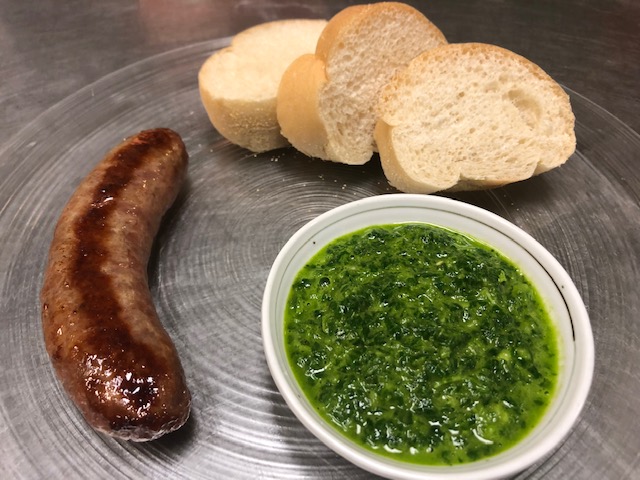Sweet and Sour Red Cabbage with Apple
I’ve been making this dish for many years, typically to accompany a roast of pork or turkey. For the last fifteen years or so we have sold it by the quart at the restaurant as a side dish with roasted turkeys and other Thanksgiving items that many of our customers order for the holiday.
I first encountered this bright and beautiful treat in college at the classy demonstration cafeteria run by the School of Home Economics, where they called it “Belgian Red Cabbage.” I’ve since learned that sweet and sour red cabbage, often with apple, is prepared in northern Germany, Denmark, and Czech Republic, and elsewhere in central and northern Europe. I actually had it at a Czech restaurant in East Berlin, where it came with roasted goose and potato dumplings.
Here’s how I make it.
1
medium red cabbage
1
large apple
10
whole allspice berries
4-inch
strip of orange zest, peeled preferably from an organic or well-scrubbed orange
1/2
cup water
1/2
teaspoon salt, plus more to taste
1/4
teaspoon black pepper
5
tablespoons cider vinegar
4
tablespoons sugar
Quarter the cabbage, cut out and discard the core. Shred cabbage finely (this can be done with a 2-milometer blade in a food processor or mandolin). Peel, quarter, and core the apple and chop the quarters into small pieces. The orange zest and allspice berries can be tied in a small cheesecloth bag for easy removal later.
In a stainless steel or enamel (not aluminum or cast iron) pot bring the cabbage, apples, allspice, orange peel, pepper, salt, and 1/2 cup water to a boil. Simmer, covered, stirring from time to time and adding a little water to keep some liquid on the bottom of the pan. Cook until cabbage is tender and the apple has broken up (about 20 min).
Remove the cheesecloth bag or if it wasn’t used remove the orange peel and allspice berries as you see them. Add the vinegar and sugar plus salt to taste. Simmer about 5 minutes. The color will become a bright crimson red. Taste and add more sugar, vinegar, and/or salt to your taste. The flavor should be delicately sweet-sour.
The dish is best if made ahead and reheated to serve. Re-check the salt before serving.



































